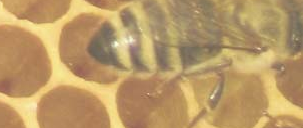
The glycemic index (GI) is a measure of how carbohydrates metabolize glucose in the blood. Foods are compared against glucose (which is given a value of 100) If the food has a value below 100, that food is expected to impact your blood sugar less than glucose. If the food has a value over 100, that food is expected impact your blood sugar more than glucose. The impact of thjis is, a carbohydrate with a low Glycemic Index produces only a small increase in blood sugar llevels, while a carbohydrate with a high Glycemic Index produces a high blood glucose level. Studies have shown that when eating low GI foods, people tend to snack less,
- The average glycemic index for honey is 55, plus or minus 5 (depending upon the variety and other factors)
- The glycemic index of white table sugar is 68, plus or minus 5.
Honey therefore has a lower GI than sugar. According to research, this may help reduce risk of coronary heart disease and type 2 diabetes.
What are high, medium and low glycemic index values
- Low - 56 and lower
- Medium - 56 to 69
- High - 70 and above
Glycemic Load
Glycemic load (GL) takes into account the portion size of a food as well as the glycemic index of that food.
Glycemic Load = GI/100 multiplied by the net grams of carbohydrate (net carbohydrate is the total grams of carbohydrate minus the dietary fiber).
In theory, a large amount of a low GI food may increase your blood sugar as much as a small amount of a high GI food.
We have a more complete table of Glycemic Index and Glycemic Loads values of foods on this page. Below are a few examples to compare honey against.
| FOOD | Glycemic index (glucose = 100) | Serving size (grams) | Glycemic load per |
| Honey | 50 - 60 | 25 | 12 |
| Table sugar | 63 - 73 | ||
| Microwave plain popcorn | 65 - 72 | 20 | 7 |
| Potato chips | 56 | 50 | 12 |
| Couscous | 65 | 150 | 9 |
| Quinoa | 53 | 150 | 13 |
| An average apple | 36 | 120 | 5 |
| Whole wheat/whole meal bread | 69 -- 76 | 30 | 9 |
| Coco Cola | 63 | 250 ml | 16 |
You can find a detailed explanation Glycemic Index and Glycemic Load on this page.
Honey and Diabetes
Diabetes-Library.org says:
About ninety-nine percent of the time, your doctor will say that you can't eat honey if you are a diabetic. Research, however, is pointing to the fact that small amounts of honey can actually be beneficial to people with diabetes or those who have prediabetes (who have high blood sugar levels but not so high that they have diabetic levels of blood sugar).
Is Blue Agave better than Honey?
Dr. Jonny Bowden in Huffington Post writes:
Agave syrup (nectar) is basically high-fructose corn syrup masquerading as a health food
References
- University of Arizona
- UCSF
- Harvard University
- International tables of glycemic index and glycemic load values: 2008 by Fiona S. Atkinson, Kaye Foster-Powell, and Jennie C. Brand-Miller in the December 2008 issue of Diabetes Care, Vol. 31, number 12, pages 2281-2283.
- Huffington Post - Debunking the Blue Agave Myth
- Diabetes-Library.org